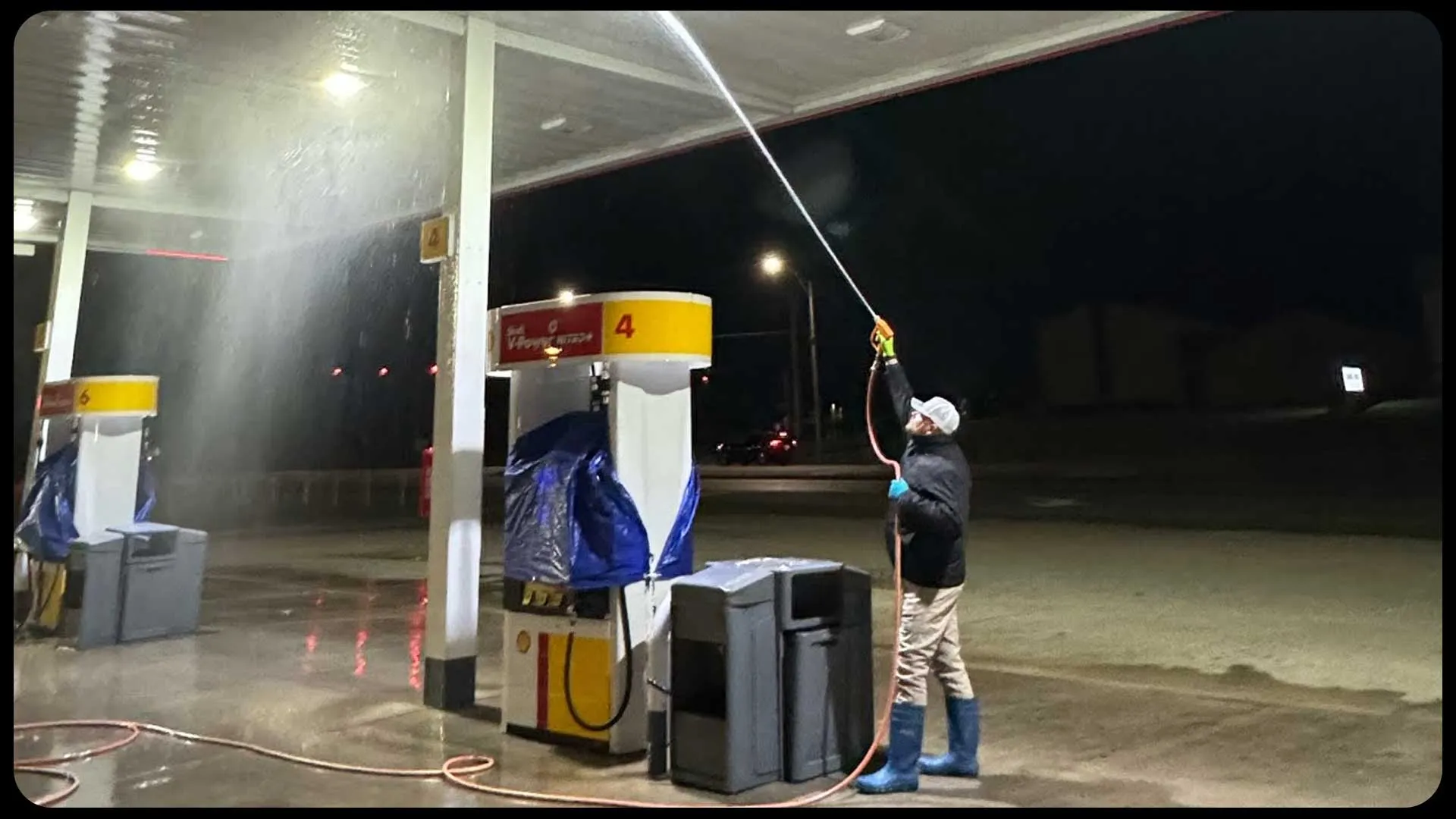It always starts the same way: one employee slips on a greasy loading dock, while another customer trips on a stained fuel island. One inspector sees drainage pooling near the dumpster pad.
And then?
One fine. One lawsuit. One preventable disaster.
We once consulted for a gas station chain that paid $250,000 after a night shift worker fell on a slick spot by the dumpster. There were no cleaning logs. No warnings. Just months of buildup from ignored maintenance.
The Slippery Truth About Neglected Surfaces
Let’s be blunt: You can’t run a clean business if your surfaces are filthy. That’s not just about reputation. It’s about liability.
- Loading docks accumulate grease, pallet grit, and oil drips
- Fuel islands are magnets for spills and gum
- Dumpster pads? Biological warfare, if left uncleaned
Neglect these areas, and you’re asking for trouble. According to the CDC, 34% of gas station injuries come from slips and falls. Not fender-benders. Not robberies. Slips.
What Clean Actually Looks Like
It’s not enough to hose things down and call it good. A proper gas station surface cleaning includes:
- Enzyme-based degreasers
- Pressure washing (hot water preferred)
- Scheduled night shifts to avoid business disruption
For loading dock surface cleaning, you’ll want to add:
- Grit removal
- Drainage clearing
- Non-slip coatings on high-traffic zones
Dumpster pad surface cleaning? That should include anti-bacterial agents and water containment to avoid runoff fines.
Compliance: The Silent Killer (of Profits)
Ever heard of OSHA Rule 1910.22? It states that all walking-working surfaces must be clean, dry, and free from hazards.
But OSHA doesn’t just want things “mopped.” They want documentation. Here’s what they actually check:
- Cleaning schedules (logbook entries)
- Evidence of slip-resistant surfaces
- Drainage systems are in working order
Fail any of these, and you could be fined up to $14,502 per violation. That’s per surface, per day.
Cleaner Stations, Bigger Profits
This part surprises most owners: Customer care. According to NACS, a clean fuel station sees 18% higher fuel sales. Why? Because nobody wants to pump gas where the ground looks like a biohazard.
We worked with a regional chain that started monthly cleanings. In six months:
- Slip claims dropped 89%
- Fuel sales increased
- Customer reviews specifically mentioned the clean property
Cleanliness is a competitive advantage.
DIY Is Not the Move Here
Your staff isn’t equipped. You need professionals with:
- Commercial-grade hot water equipment
- Oil-eating bio treatments
- Night crew operations
Hiring pros means less disruption and total documentation.
Oh, and insurance coverage. If a contractor messes up? They’re covered. Your teenager with a mop? Not so much.
Final Call: Don’t Wait for the Lawsuit
You’re running a business, not a Slip ‘n Slide.
Think long-term: Prevent accidents. Impress inspectors. Attract customers.
Start with a site assessment. Let us inspect your lot, loading dock, fuel island, and dumpster pad and create a customized schedule that keeps you clean and compliant.
Download our free OSHA compliance checklist today, or let us take the pressure off for you.
